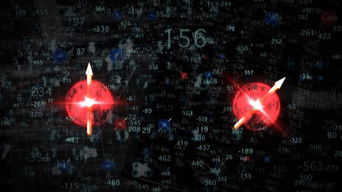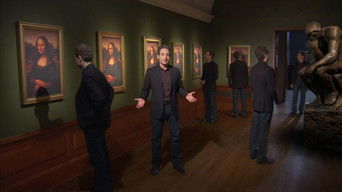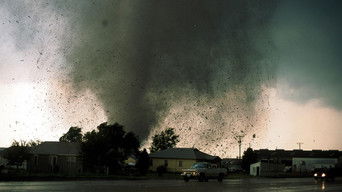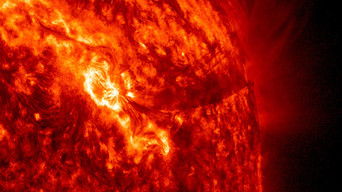Go back

Engineering Ground Zero
Episode number: 1
Overview: To commemorate the 10th anniversary of 9/11, NOVA presents an epic story of engineering, innovation, and the perseverance of the human spirit. With extraordinary access granted by The Port Authority of New York and New Jersey, “Engineering Ground Zero” follows the five-year construction of One World Trade Center (1 WTC) and the National September 11 Memorial & Museum.

Surviving the Tsunami
Episode number: 2
Overview: The earthquake that hit the northern coast of Japan on March 11, 2011, was recorded at magnitude 9.0 the worst ever recorded in Japan. It generated an unprecedented tsunami, obliterating coastal villages and towns in a matter of minutes. In some areas, the tsunami climbed above 100 feet in height and traveled miles inland. Amazingly, amateur and professional photographers captured it all on video, including remarkable tales of human survival, as ordinary citizens became heroes in a drama they never could have imagined. As the waves rush in, a daughter struggles to help her elderly mother ascend their rooftop to safety; a man climbs onto an overpass just as the wave overtakes his car. These never-before-seen stories are captured in video and retold after the fact by the survivors who reveal what they were thinking as they made their life-saving decisions. Their stories provide lessons for how we should all act in the face of life-threatening disasters.

Finding Life Beyond Earth: Are We Alone?
Episode number: 3
Overview: Take a spectacular trip to distant realms of our solar system to discover where secret forms of life may lie hidden. Combining the latest telescope images with dazzling animation, this program immerses audiences in the sights and sounds of alien worlds, while top astrobiologists explain how these places are changing how we think about the potential for life in our solar system. We used to think our neighboring planets and moons were fairly boring—mostly cold, dead rocks where life could never take hold. Today, however, the solar system looks wilder than we ever imagined.

Iceman Murder Mystery
Episode number: 4
Overview: He’s been dead for more than 5,000 years and poked, prodded, and probed by scientists for the last 20. Yet Ötzi the Iceman, the famous mummified corpse pulled from a glacier in the Italian Alps, continues to keep many secrets. Now, through an autopsy like none other, scientists will attempt to unravel mysteries about this ancient mummy, revealing not only the details of Ötzi’s death but also an entire way of life. How did people live during Ötzi’s time, the Copper Age? What did they eat? What diseases did they cope with? Join NOVA as we defrost the ultimate time capsule—the 5,000-year-old man

The Fabric of the Cosmos: What is Space?
Episode number: 5
Overview: Space. It separates you from me, one galaxy from the next, and atoms from each other. It is everywhere in the universe. But to most of us, space is nothing, an empty void. Well, it turns out space is not what it seems.

The Fabric of the Cosmos: The Illusion of Time
Episode number: 6
Overview: Time. We waste it, save it, kill it, make it. The world runs on it. Yet, ask physicists what time actually is, and the answer might shock you: They have no idea. Even more surprising, the deep sense we have of time passing from present to past may be nothing more than an illusion. How can our understanding of something so familiar be so wrong?

The Fabric of the Cosmos: Quantum Leap
Episode number: 7
Overview: Join Brian Greene on a wild ride into the weird realm of quantum physics, which governs the universe on the tiniest of scales. Brian brings quantum mechanics to life in a nightclub like no other, where objects pop in and out of existence, and things over here can affect others over there, instantaneously-without anything crossing the space between them.

The Fabric of the Cosmos: Universe or Multiverse?
Episode number: 8
Overview: Hard as it is to swallow, cutting-edge theories are suggesting that our universe may not be the only universe. Instead, it may be just one of an infinite number of worlds that make up the multiverse. In this show, Brian Greene takes us on a tour of this brave new theory at the frontier of physics, explaining why scientists believe it's true and showing what some of these alternate realities might be like.

Deadliest Volcanoes
Episode number: 9
Overview: Millions of people around the world live in the shadow of active volcanoes. Under constant threat of massive volcanic eruptions, their homes and their lives are daily at risk from these sleeping giants. From Japan’s Mount Fuji to the "Sleeping Giant" submerged beneath Naples to the Yellowstone "supervolcano" in the United States, we will travel with scientists from around the world who are at work on these sites, attempting to discover how likely these volcanoes are to erupt, when it might happen, and exactly how deadly they could prove to be.

Bombing Hitler's Dams
Episode number: 10
Overview: In 1943 a squadron of Lancaster bombers staged one of the most audacious raids in military history: destroying two gigantic dams in Germany’s industrial heartland and cutting the water supply to arms factories. Their secret weapon? A revolutionary bouncing bomb invented by British engineer Barnes Wallis. Wallis and the pilots of 617 Squadron—a lively mix of Britons, Australians, Americans, and Canadians—were hailed as heroes who dealt a mighty blow to the German war machine. Now, NOVA recreates the extreme engineering challenges faced by Wallis and the pilots. A crack team of experts, including dam engineers, explosives specialists, mechanics, and aircrew, steps into the shoes of the "dambusters" and attempts to overcome each of the obstacles the original team faced. They must adapt a vintage World War II DC-4 to carry a bomb the size of an oil drum, train to drop it from a dangerously low altitude in pitch darkness, and get it to bounce over obstacles and onto the target, a scale model the German dam struck by the original dambusters. Can they succeed in destroying the dam and unraveling the mysteries of the one-of-a-kind bouncing bomb?

3D Spies of WWII
Episode number: 11
Overview: During World War II, Hitler’s scientists developed terrifying new weapons of mass destruction. Alarmed by rumors of advanced rockets and missiles, Allied intelligence recruited a team of brilliant minds from British universities and Hollywood studios to a country house near London. Here, they secretly pored over millions of air photos shot at great risk over German territory by specially converted, high-flying Spitfires. Peering at the photos through 3D stereoscopes, the team spotted telltale clues that revealed hidden Nazi rocket bases. The photos led to devastating Allied bombing raids that dealt crucial setbacks to the German rocket program and helped ensure the success of the D-Day landings. With 3D graphics that recreate exactly what the photo spies saw, NOVA tells the suspenseful, previously untold story of air photo intelligence that played a vital role in defeating the Nazis.

Mystery of a Masterpiece
Episode number: 12
Overview: In October 2007, a striking portrait of a young woman in Renaissance dress made world news headlines. Originally sold nine years before for around $20,000, the portrait is now thought to be an undiscovered masterwork by Leonardo da Vinci worth more than $100 million. How did cutting-edge imaging analysis help tie the portrait to Leonardo? NOVA meets a new breed of experts who are approaching "cold case" art mysteries as if they were crime scenes, determined to discover "who committed the art." And it follows art sleuths as they deploy new techniques to combat the multibillion-dollar criminal market in stolen and fraudulent art.

Ice Age Death Trap
Episode number: 13
Overview: In a race against developers in the Rocky Mountains, archeologists uncover a unique fossil site packed with astonishingly well-preserved bones of mammoths, mastodons, and other giant extinct beasts. The discovery opens a highly focused window on the vanished world of the Ice Age in North America.

Separating Twins
Episode number: 14
Overview: This is the incredible story of Trishna and Krishna, twin girls born joined at the head. Abandoned shortly after birth at an orphanage in Bangladesh, they had little chance of survival, until they were saved and taken to Australia by an aid worker. After two years battling for life, the twins are ready for a series of delicate operations that will prepare them for the ultimate challenge: a marathon separation surgery that will allow them to live truly separate lives. Since the beginning, surgeons knew there was no guarantee of survival for either of the girls—but without surgery there was no hope at all. With exclusive access to this extraordinary human and medical drama, our cameras have been with Trishna and Krishna and their caregivers at each moment of their journey.

Cracking Your Genetic Code
Episode number: 15
Overview: What will it mean when most of us can afford to have the information in our DNA—all three billion chemical letters of it—read, stored, and available for analysis? In "Cracking Your Genetic Code," NOVA reveals that we stand on the verge of a revolution. We meet cancer patients returned to robust health and a cystic fibrosis sufferer breathing easily because scientists have been able to pinpoint and neutralize the genetic abnormalities underlying their conditions. What are the moral dilemmas raised by the new technology? Will it help or hurt us to know our genetic destiny? What if such information falls into the hands of insurance companies, employers, and prospective mates? One thing is for certain: The new era of personalized, gene-based medicine is relevant to everyone. Soon, all of us may be deciding whether to join the ranks of the DNA generation.

Hunting the Elements
Episode number: 16
Overview: Where do nature’s building blocks, called the elements, come from? They’re the hidden ingredients of everything in our world, from the carbon in our bodies to the metals in our smartphones. To unlock their secrets, David Pogue, the lively host of NOVA’s popular "Making Stuff" series and technology correspondent of The New York Times, spins viewers through the world of weird, extreme chemistry: the strongest acids, the deadliest poisons, the universe’s most abundant elements, and the rarest of the rare—substances cooked up in atom smashers that flicker into existence for only fractions of a second.

Deadliest Tornadoes
Episode number: 17
Overview: In April 2011, the worst tornado outbreak in decades left a trail of destruction across the U.S., killing more than 360 people. Why was there such an extreme outbreak? How do such outbreaks form? With modern warning systems, why did so many die? Is our weather getting more extreme—and, if so, how bad will it get? In this NOVA special, we meet scientists striving to understand the forces at work behind last year's outbreak. Could their work improve tornado prediction in the future? We also meet people whose lives have been upended by these extreme weather events and learn how we all can protect ourselves and our communities for the future.

Why Ships Sink
Episode number: 18
Overview: Twenty million passengers embark on cruises each year, vacationing in deluxe "floating cities" that offer everything from swimming pools to shopping malls to ice skating rinks. And the ships just keep getting bigger: The average cruise ship has doubled in size in just the last ten years. Some engineers fear that these towering behemoths are dangerously unstable, and the recent tragedy of the Costa Concordia has raised new questions about their safety. Now, NOVA brings together marine engineering and safety experts to reconstruct the events that led up to famous cruise disasters, including the ill-fated Concordia, the Sea Diamond, and the Oceans.

Secrets of the Sun
Episode number: 19
Overview: It contains 99.9 percent of all the matter in our solar system and sheds hot plasma at nearly a million miles an hour. The temperature at its core is a staggering 27 million degrees Fahrenheit. It convulses, it blazes, it sings. You know it as the sun. Scientists know it as one of the most amazing physics laboratories in the universe. Now, with the help of new spacecraft and Earth-based telescopes, scientists are seeing the sun as they never have before and even recreating what happens at its very center in labs here on Earth. Their work will help us understand aspects of the sun that have puzzled scientists for decades. But more critically, it may help us predict and track solar storms that have the power to zap our power grid, shut down telecommunications, and ground global air travel for days, weeks, or even longer. Such storms have happened before—but never in the modern era of satellite communication. "Secrets of the Sun" reveals a bright new dawn in our understanding of our nearest star—one that might help keep our planet from going dark.